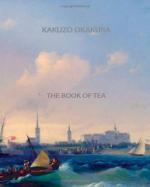
|
| Name: _________________________ | Period: ___________________ |
This test consists of 15 multiple choice questions and 5 short answer questions.
Multiple Choice Questions
1. What do the great masters never forget?
(a) They are immortal.
(b) They are making art for an audience.
(c) They have been given a gift.
(d) They are special.
2. Many stories in Japan feature the rescue of what?
(a) Art pieces.
(b) People.
(c) Tea masters.
(d) Monks.
3. What are the invention of tea masters?
(a) Many other art forms.
(b) Many silk flowers.
(c) Many tea cups.
(d) Many dishes.
4. What was the purpose of the garden path?
(a) To make the land around the tea room look aesthetically-pleasing.
(b) So tea drinkers could have a nice view.
(c) To preserve nature.
(d) To sever any connection to the outside world.
5. The tea room is primarily derived in spirit from what?
(a) The Buddhist monastery.
(b) The Catholic monastery.
(c) The Zen monastery.
(d) The Hindu monastery.
6. Rikyu had a final, magnificent ___________________.
(a) Dance.
(b) Tea ceremony.
(c) Song.
(d) Lunch.
7. Ultimately, what intermingle as to be indistinguishable?
(a) Sociology and music.
(b) Art and artist.
(c) Artist and musician.
(d) Art and music.
8. Why did most great tea-masters use Zen concepts for the tea room?
(a) They were the children of Zen.
(b) They were Zen priests.
(c) They were students of Zen.
(d) They knew no other way to serve tea.
9. Many tried to play the harp--could it be mastered?
(a) Only at night.
(b) Only by a few.
(c) No.
(d) Yes.
10. Okakura uses this tale to illustrate what?
(a) History.
(b) Art appreciation.
(c) Cultural studies.
(d) Art history.
11. The tea room looks small and impoverished, and the construction of one may be __________.
(a) Very cheap.
(b) Somewhat costly.
(c) Very costly.
(d) Somewhat cheap.
12. Tea-masters are _______________ when choosing the art.
(a) Quite selective.
(b) Quite slow.
(c) Quite unusual.
(d) Quite quick.
13. How many schools of thought exist in flower arrangement?
(a) Four.
(b) Three.
(c) Five.
(d) Two.
14. They also believed that art begins where?
(a) Within.
(b) In a paint palette.
(c) In a picture.
(d) In nature.
15. Can vain artists, absorbed with their own genius, ever truly connect with others?
(a) No, not often.
(b) No, never.
(c) Yes, most of the time.
(d) Yes, always.
Short Answer Questions
1. Of what did he sing?
2. Tea-masters justify the cutting of flowers by viewing it as what?
3. Eastern plant care is an ancient art and treasured custom, and from this tea-masters have developed what is called what?
4. What is kept in the anteroom?
5. Okakura laments that the flower was born how?
|
This section contains 445 words (approx. 2 pages at 300 words per page) |

|




